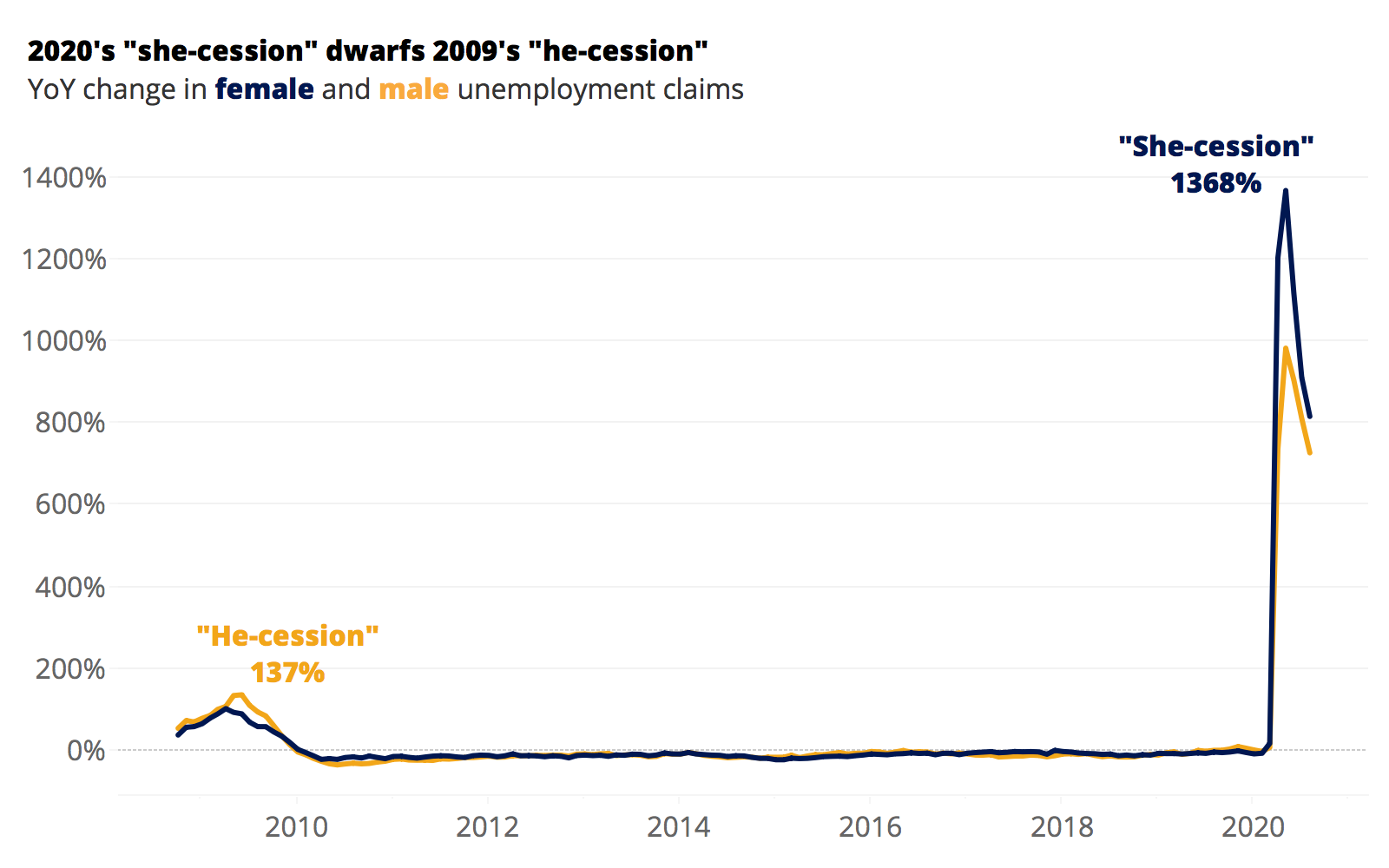We can tell you that unemployment claims for women rose 1,368% in May compared to May 2019. Or we can just show you the picture:

Both men and women have experienced significant unemployment since the COVID-19 pandemic began. But the unprecedented surge is impacting women more severely than men, because women are more likely than men to work in the U.S. service sector industries hardest hit by the pandemic: retail, restaurant, and arts and entertainment, among others. Childcare during the pandemic is also a factor; in a recent Census Bureau survey, working mothers were three times more likely than working fathers to cite childcare as the main reason they were out of work (22.1% versus 7.7%, respectively).
Unequal rent burdens
Our interactive chart (above) on the share of income female-headed renter households spend on rent compared to male-headed households also reveals a higher level of housing insecurity. Almost a quarter (24%) of female-headed renter households spend more than half of their income on housing, versus just 17% of similar male-headed households. Nationwide, over the past four decades, women’s wages have grown faster than men’s. But there’s still a gender pay gap, with women earning 15 cents less to the dollar than men in 2018 according to Pew Research. Select the region you live in to see local data.
Dive deeper into the data on women and the pandemic on our housing research page.